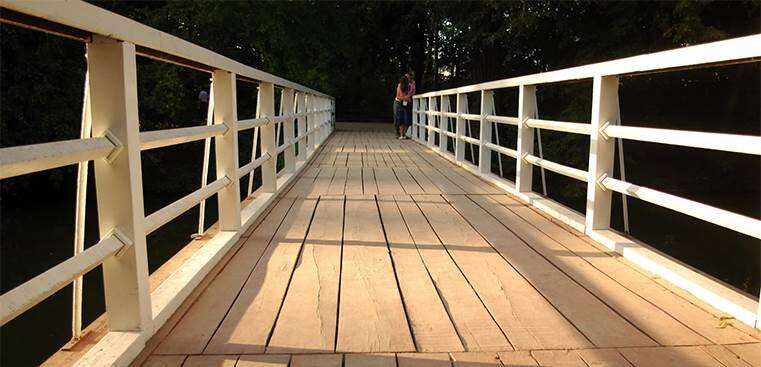New model predicts changes in wood

Wood is a living material that changes with varying temperatures and humidity. Sabina Huč, a former researcher at the University of Borås, has developed a model that can predict wood's behavior. It has already been used to describe what is happening to wood from the royal vessel Vasa when the climate in its museum varies.
For thousands of years, people have used wood to build. The fact that the material shrinks and swells is common knowledge. But there has not been much research on exactly how and where in a construction cracks can occur. Sabina Huč has recently received her doctorate in Applied Mechanics at Uppsala University. She has investigated wood's properties and linked physics and mechanics in a mathematical model. It calculates various types of changes in wood, so-called elastic, viscoelastic and meconosorptive responses, as well as shrinkage and swelling.
"The purpose is to better understand and predict wood's behavior over time," she says.
Experiments of oak, pine, spruce and glulam samples were analyzed where they were subjected to mechanical loads in an environment of varying humidity.
"The results are very promising; the model I have developed is in line with the experiments," says Sabina Huč.
Lack of knowledge can cost
European building codes are based on science, but more knowledge is needed on how load-bearing wooden structures are affected by natural variations in the surrounding environment. This is of interest to Staffan Svensson, professor of Building Technology at the University of Borås and Sabina Huč's supervisor. It is hoped that the model can be used when new European construction standards for wooden structures are developed.
"The lack of knowledge means that the industry requires over-dimensioning when building, which means over-consumption and higher costs," says Staffan Svensson.
Sabina Huč's model connects physics and mechanics. It makes it possible to describe what happens to wood in a whole new way. One example of a field of application is to anticipate harmful tension states that may arise. It will be used in the work to preserve the old royal vessel Vasa, which sank in 1628 and was salvaged in 1961. In order to reduce the stresses on Vasa, a new load-bearing support structure is to be built. Here, the research will help predict how the wood will be affected in the long term.
More information: Huč, S. (2019). Moisture-Induced Strains and Stresses in Wood (PhD dissertation). Uppsala. Retrieved from urn.kb.se/resolve?urn=urn:nbn:se:uu:diva-375148
Provided by University of Borås




















